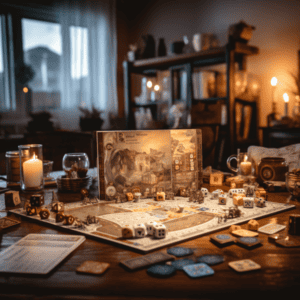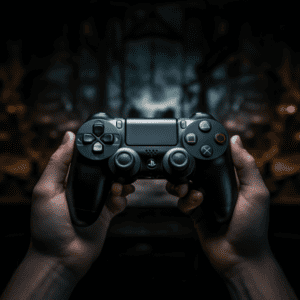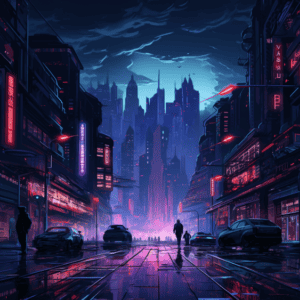
Creating a classic JRPG Development is like forging a masterful sword, each step in the process requiring precision and care to ensure that the final product will be both beautiful and deadly.
In this article, we’ll take you behind the scenes of game design and development to show you how these games are made.
From the conceptualization phase all the way through release, crafting a JRPG is a laborious journey full of challenges and triumphs.
Designers must meticulously plan out every aspect of gameplay mechanics, storylines, character development, and visual aesthetics with an eye towards creating something unique that will stand out among its peers.
Developers then have the daunting task of turning those ideas into reality, working tirelessly to perfect everything from battle systems to sound effects.
Join us as we explore what it takes to create some of gaming’s most beloved titles – The Making of a Classic JRPG: Behind the Scenes of Game Design and Development.
Conception And Story Design
When it comes to creating a new game, the conception and story design phase is crucial. This is where the foundation of the entire game is laid out – the characters, world, and overall narrative. It’s important for development teams to spend ample time in this stage to ensure that they have a clear vision for what they want their players to experience.
One key aspect of character design is creating relatable and dynamic protagonists. Players want to feel invested in their player character’s journey throughout the game. The process of designing these characters involves considering their backstory, personality traits, motivations, and how they fit into the larger narrative.
From there, designers can then begin fleshing out the supporting cast of characters who will interact with the player throughout their journey. With compelling character designs in place, developers can start building out the world and crafting meaningful gameplay experiences around them.
Ultimately, strong narrative design should be at the heart of any great game.
Mechanics And Level Design
As the team behind a classic JRPG, we know that mechanics and level design are crucial components to keep players engaged. Every decision we make in this area is key to creating an immersive experience for the player character. Role-playing games (RPGs) require careful attention to detail when it comes to gameplay mechanics, as they can have a significant impact on how players engage with the story.
One of our most significant design decisions was implementing a leveling system that allows players to grow their characters over time. Leveling up grants access to new abilities and skills, which provides intrinsic motivation for players who enjoy seeing their characters progress.
We also focused heavily on level design, ensuring that each location had its unique feel while still fitting into the overarching narrative. By doing so, we created a world where exploration felt rewarding and provided opportunities for players to test their abilities. Overall, balancing these elements takes time but results in a more satisfying gaming experience for fans of RPGs.
As important as mechanics and level design are, programming and testing play an equally vital role in bringing our game to life. In the next section, we’ll delve into some of the challenges faced by development teams during programming and testing phases.
Programming And Testing

As the gears of game design turn, mechanics and level design are just one part of the grand scheme. Like a well-oiled machine, programming and testing ensure that all parts come together to create a seamless experience for the player. Think of it like building a house – while the foundation and structure are important, without proper wiring and plumbing, it would be uninhabitable.
When it comes to programming, choosing the right game engine is essential. Nintendo has famously relied on their in-house engines such as N64’s Reality Coprocessor or Gamecube’s Flipper but many developers opt for third-party options such as Unity or Unreal Engine. These engines allow for easier coding and implementation of 3D games which have become increasingly popular over time. However, regardless of what engine is used, adherence to strict design philosophies ensures a cohesive final product that will satisfy both players and development teams alike.
To achieve this end goal requires rigorous testing at every stage of development. As any developer can attest, bugs can often arise unexpectedly causing crashes or other issues that disrupt gameplay. By implementing thorough testing procedures early on in development, these issues can be caught more easily before they snowball into larger problems later down the line.
In addition to fixing bugs, testing can also provide valuable feedback on narrative design choices or character classes that may need tweaking based on player reactions. Ultimately, by prioritizing programming and testing alongside other aspects of game creation, studios are able to produce works that stand out from their peers with memorable experiences for fans worldwide.
Conclusion
In conclusion, the making of a classic JRPG is no easy feat. It requires a team of dedicated individuals who share a passion for gaming and storytelling.
From conception to programming and testing, every step in the process needs careful consideration and attention to detail.
Creating a game is like crafting a masterpiece – it takes time, effort, and patience. But when all the pieces come together seamlessly, the end result is nothing short of breathtaking.
And that’s what makes being part of a game design and development team so rewarding – seeing players immerse themselves in your world and lose themselves in the story you’ve created.
It’s an experience unlike any other, one that keeps us coming back for more every time.






